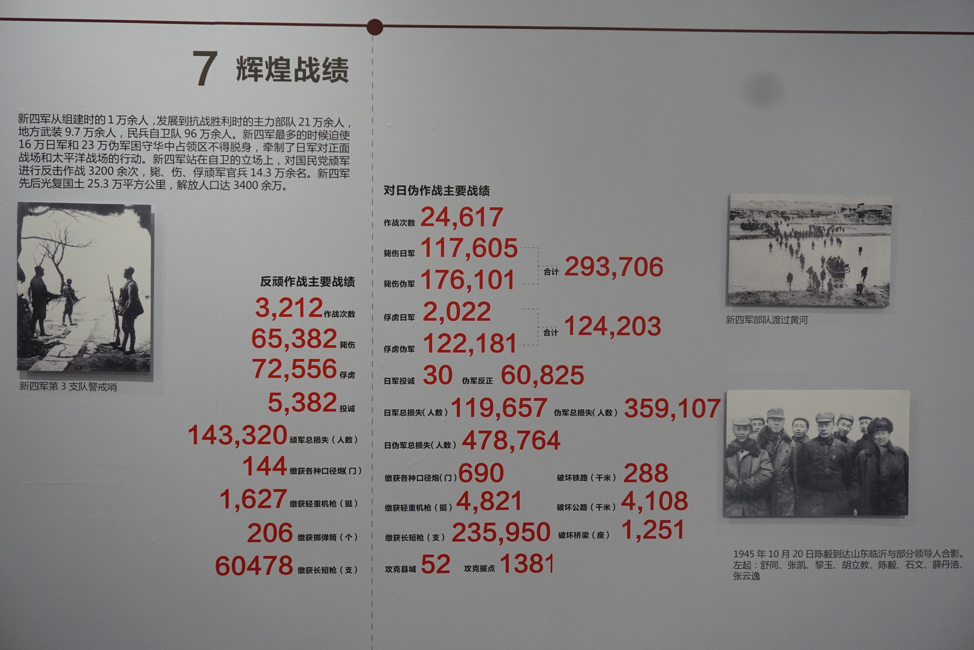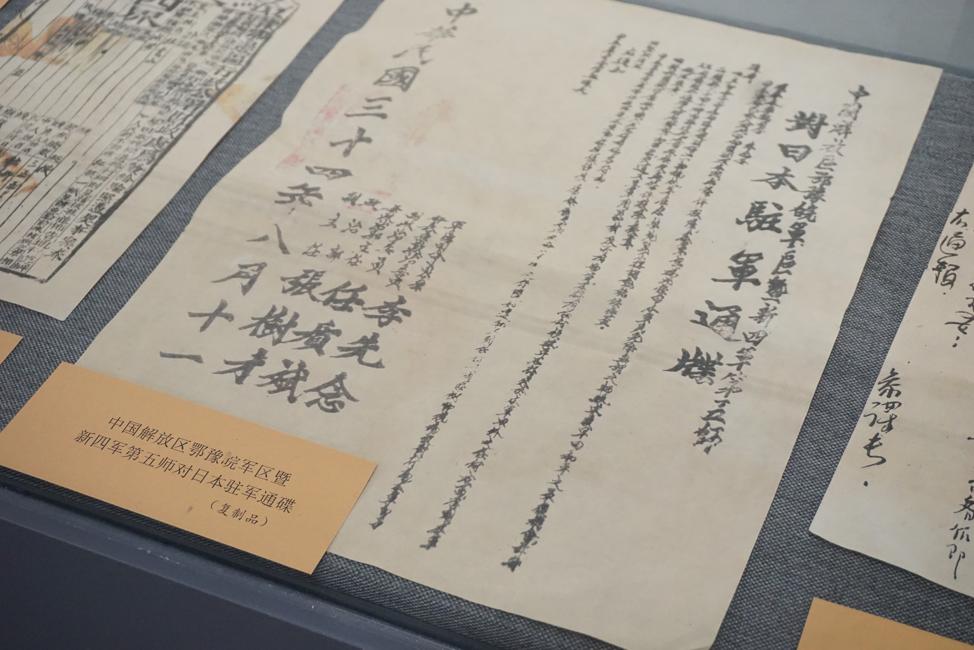Wanlin museum recently concluded an exhibition on new fourth army(N4A) titled “Strive for our homeland – a retrospective exhibition on new fourth army fifth division”. Organized by Beijing new fourth army and central China anti-Japanese base research institute and Hubei new fourth army research institute, the exhibition was put on displayfrom November 30 to December 8 with sponsorshipfrom Taikang insurance group. The history of new fourth army is the one that has been largely neglected and forgotten by historians but is anunforgettable memoryfor the people of Wuhan. The exhibition was a stark reminder of the youthful resilience and courage of the army and the political scenario of Wuhanon wartime.
Early in the period of united resistance, the Survivors from the long march were permitted to regroup as the new fourth army in Southern provinces.This exhibition pays tribute to N4A military leader Ye ting, deputy military leader Xiang Ying and several other leaders during N4A’s founding years. It also spotlighted several other lesser unknown facts on the US-China coalition against Japanese aggression.
In 1940, American female journalists Agnes Smedley and Anna Louise Strongtravelled with N4A while reporting on the war. They spent three months gathering news, interviewed PRC general Li Xiannian and raised money for medicines. On the domestic side, Health post chief Li Xiuzhen and CPC County Secretary Ceng Zhi were strong Chinese women who held important positions in the war against Japan.
During 1940, American and Chinese soldiers fought side by side to drive the Japanese troops away. In one photograph, Ed Mulholland and AW Lewis are shown standing in front of Chinese officers’ quarters with captain Hsu and yan kuan. There was a copy of a letter dated back to November 1944 alongside, it was sent by US Army Airforce Lt. ColonelBill Reeds to Lewis’s mother , informing her that he was safe and will be returning to the US soon.
N4A is also credited for the rescue of American fighter pilot Glenn Beneda in 1944 who was shot down by Japanese air force. Luckily, he was rescued by farmers in luojia village, Jianli County and they assistedhim to contactthe 5th division headquarters of the New Fourth Army.
The formation of N4A brought a new wave of peasant nationalism and the exhibition put into display the life of the then peasants fraught with risks in supplying the revolutionaries with food materials inside a Japanese occupied territory. Thousands of peasants were executed in assisting the N4A.The lives of health care workers and weapon manufacturers were no different. Amidst constant threats and vigil, they kept the war going, providing our soldierswith necessary paraphernalia and sometimes even burying them underneath the ground so that the Japanese couldn’t lay their hands on the supplies. All those well-captured photographs were a testament to their courage and it shed light on these unsung heroes of the war.
A documentary on the new fourth army was also shown on a projector. The exhibition also puts into display a rare assortment of official documents, manuscripts, maps and letters on the several missions they undertook.
The infamous “new fourth army incident” occurred in 1941 when N4A Defiantlyclashed with the Kuomintang troops, which broke the anti-Japanese alliance. It was the largest armed conflict between nnational party memberes and communists during the Sino-Japanese War.
The exhibition charted out the several regiments and leaders of the army in chronological order. Handprints of the surviving New Fourth Army veterans were the centerpiece of the exhibition, adjoining a wall with the names of the “known” soldiers who sacrificed honorablyduring the war. Many researchers who had dedicated their lives documenting historical narratives on N4A were also honored with a separate section which included their photographs and published books.Several WHU students provided illustrations to be displayed at the exhibition. They further gave visitors, which includedN4A war veterans and their families, an opportunity to ruminate over the past.

Introduction of the exhibition

Glorious military exploits of the new forth army

Some handprints of the fifth division in the surviving new forth army veterans

The ultimatum from the fifth division in the new forth army to Japanese garrisons
(Photo by: Chen Ziyao)
(Edited by Zheng Yayun, Liu Jiachen and Liu Xiaoli)